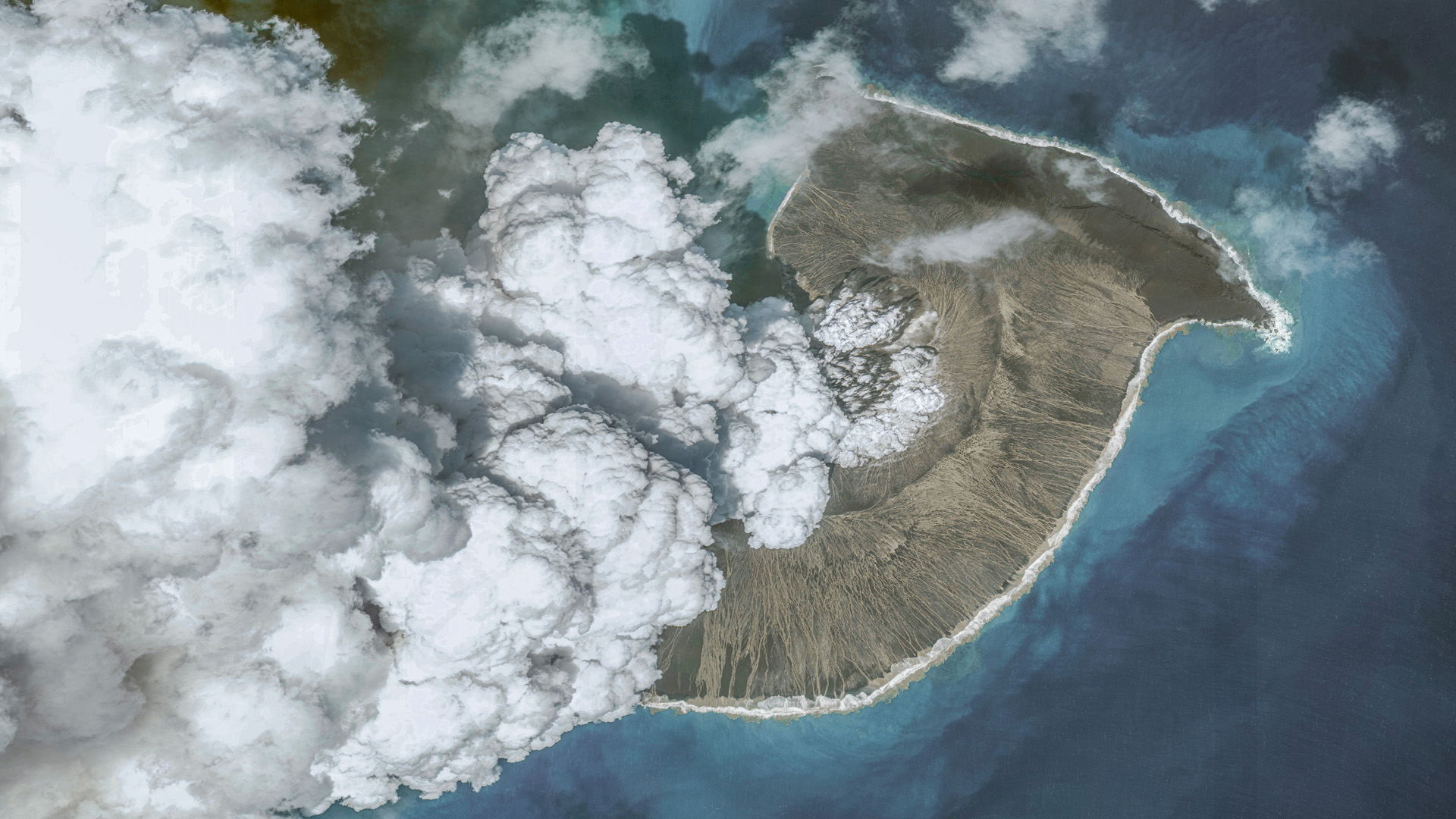Eruption of Hunga Tonga-Hunga Ha’apai Volcano Potentially Impacts Ozone Layer
Hunga Tonga-Hunga Ha’apai is a submarine volcano in the Tongan archipelago located in the Southern Pacific Ocean, that erupted in January 2022. Eruption of Hunga Tonga-Hunga Ha’apai Volcano Potentially Impacts Ozone Layer.

How volcanic eruptions impact ozone layer?
- Eruption triggers massive stratospheric water vapor plume, potentially enhancing early- season Antarctic ozone-depletion reactions.
- Volcanic eruptions inject large quantities of sulphur dioxide into the stratosphere facilitating the chemical conversion of chlorine into more reactive forms that destroy ozone.
- Volcanoes significantly contribute atmospheric bromine, and hydrogen chloride, a common volcanic gas that efficiently destroys ozone.
- Particles generated by volcanic eruptions provide surfaces for chemical reactions, for ozone-depleting substances.
Volcanic eruption can cause about 1-5% of atmospheric ozone damage.
Earlier, 1991 eruption of Mt. Pinatubo in the Philippines led to significant ozone loss in the stratosphere.

About the Ozone hole:
- Ozone hole refers to regions in the stratosphere over Antarctica where the Ozone (O3) layer significantly depletes during the Southern Hemisphere’s spring season.
- It denotes areas where ozone levels drop below 220 Dobson Units.
♦ The average thickness of the ozone layer over Earth is about 300 Dobson Units. - Ozone depletion is due to the chemical action of pollutants known as ozone-depleting substances (ODS).
- Major ODS include chlorine, bromine, Chlorofluorocarbons, carbon tetrachloride, halons, etc
Ozone protection conventions:
- Vienna Convention on Protection of Ozone Layer was adopted in 1985
- Montreal Protocol on Substances that Deplete the Ozone Layer signed in 1987
- Kigali Agreement, for the amendment to 1987 Montreal Protocol, signed in 2016.
Read Article: India hosts the 6th International Solar Alliance (ISA) Assembly in New Delhi
